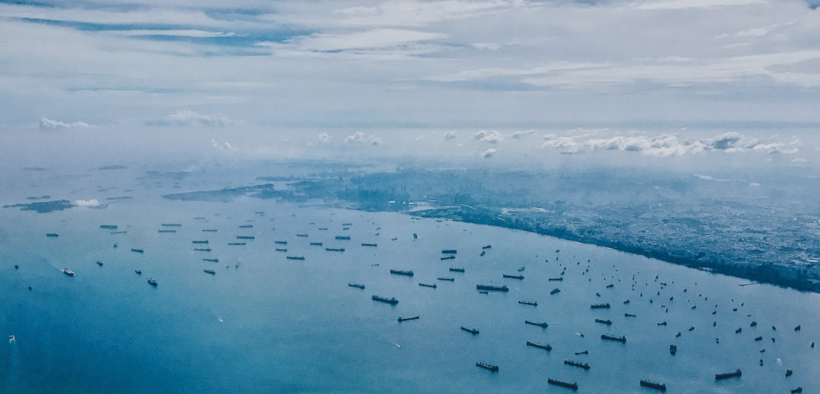Peak industry body Shipping Australia has thoroughly endorsed the concept of a “strategic fleet” in their submission to the Productivity Commission’s Supply Chain Study.
Shipping Australia believes that the existing international seaborne fleet is far superior in risk management terms than any national single-point-of-failure fleet. The existing international fleet is strategically robust. It is strategically resilient. It is strategically diverse. It is THE strategic fleet bar none.
According to the industry body, it is well known that strategic diversification and strategic redundancy massively reduces risk.
In a statement, Shipping Australia described the existing international ocean shipping fleet is, as a whole, as already inherently resilient to supply chain risks that affect shipping because of its massive systemic redundancy and massive diversification.
The organisation posed that we can think of the global ocean shipping as being an industry of “multiple differences”, as follows:
- there are multiple different owners and multiple different ship-operators of multiple different nationalities
- multiple different ships are in existence and they are registered under multiple different flags
- those ships work under multiple different regulatory regimes and are crewed by multiple different nationalities
- there are vessels of multiple different sizes in multiple different sectors
- they carry multiple different cargoes from multiple different producers
- they use multiple different routes to / from multiple different seaports
- the seaports are in in multiple different countries
- there are multiple different patterns of seasonality
In practice, Shipping Australia said it might look like this example:
Two ship owners, one German and the other Greek, hire Singaporean and Isle of Man ship-managers to operate their mixed fleets of containerships and dry bulkers (which are registered under the flags of Panama, the Marshall Island and the Bahamas and are therefore subject to three different sets of flag-state control). The managers hire mixed crews from eastern Europe and the Philippines.
The ships range in size from relatively small box ships to the largest types of dry bulker. The container ships carry a diverse range of freight from a wide range of manufacturers while the dry bulkers typically carry, say, iron ore (but it could be grain or some other commodity) from, say, the West Australian producers.
The container ships follow a loop originating from south east Asia and they call at several different ports in a variety of Asian countries. In Australia, they call at the main capital city ports on the east coast plus Adelaide and Fremantle. The box ships can mix or vary their routes at any time for any reason.
The bulkers run from the north west shelf of Australia to different iron ore import terminals in, say, Korea. Although the dry bulkers sail a fairly standard route, if, for any reason, their standard route through the Sunda Strait (the strait between the Indonesian islands of Sumatra and Java) is not available, the bulkers can instead sail the Lombok Strait to the east of Java. There are other options if absolutely necessary (e.g. through the Banda Sea to the east of Timor-Leste).
The containerships will have different patterns of trade throughout the year e.g. more demand in the run-up to Christmas and less demand just after.
It should be obvious that such a system with such massive redundancy and such massive diversification is inherently resistant to supply chain disruption.
National fleet is a no-good single-point-of-failure fleet
Several commentators have called for the creation of an Australian-controlled fleet.
Having a national single-point-of-failure fleet eliminates the great benefits of having a sector of “many differences”. Instead of having different flagged ships, and different owners, and different managers and different crew, there would be one owner, one flag, one manager, one set of crew and one union. That’s a single-point-of-failure.
A national fleet would reduce diversification, reduce redundancy and would therefore increase risk.
Risk of union-induced disruption would increase with a national single-point-of-failure fleet
Similarly, another major threat to the supply of shipping services in the event of the creation of a national single-point-of-failure-fleet would be industrial action by trade unions. They would be able to hold Australian families hostage to their industrial action – as they have repeatedly done to the shipping industry in the past. And as they’re currently doing now having issued notices of protected industrial action, which will again disrupt the Australian waterfront.
At least in the current set-up the unions have some difficulties targeting all sectors of the waterfront simultaneously (although they tried to do so in 2020 and that is why Shipping Australia called for reform in their Productivity Commission submission). But if there was a national single-point-of-failure fleet? Well, it wouldn’t take much stretch of the imagination to see how a militant fighting union would disrupt that fleet.
Restructuring or downsizing the national single-point-of-failure fleet would be an epic nightmare of Herculean proportions as it would inevitably result in a major industrial relations conflict with the trade unions. Because of the vital nature of shipping and its fundamental supporting role in the nation’s economy, union control over a single-point-of-failure fleet would provide huge leverage to any trade union over the various state and federal governments of the day.
National fleets get bogged down in domestic matters
National fleets typically become bogged down in domestic commercial matters and domestic political issues. Governments may, for instance, be tempted to reduce unemployment figures by encouraging workers to work in the national fleet. Consider, for instance, the old shipyards in Malta (now long-since closed down). They were nationally owned and, at one point, a considerable portion of the national population was employed by the shipyards.
Another example of a potential political conflict of interest could be the need of the national fleet to get empty boxes back to the manufacturing centres of the world (i.e. Asia) for the purpose of loading cargo for import back to Australia. However, Australian exporters would likely demand of Australian politicians that certain volumes of the national fleet’s empty boxes be reserved for their use.
That would pit importers against exporters and would increase costs at the national single-point-of-failure fleet, thereby helping (along with all the other conflicts of interest) to render the national fleet uncompetitive. The conflict between a single-point-of-failure fleet and consignees / shippers would have to be resolved through political intervention.
In the current free market set-up, this conflict is managed by the pricing signal and sound commercial management. If exporters want to export at times of high demand for containers, then they can secure their container by paying the market rate. They can manage the risk of high rates by booking in advance, negotiating for returning customer preferences, insurance and by using other financial tools where appropriate.
It is clear. According to Shipping Australia, the strategic fleet is the existing international global shipping fleet.
The industry body said any other suggestions just don’t stand up to scrutiny.
In case you missed it: Shipping Australia appoints new Chief Executive Officer
Source: Shipping Australia






















































Follow us on social media